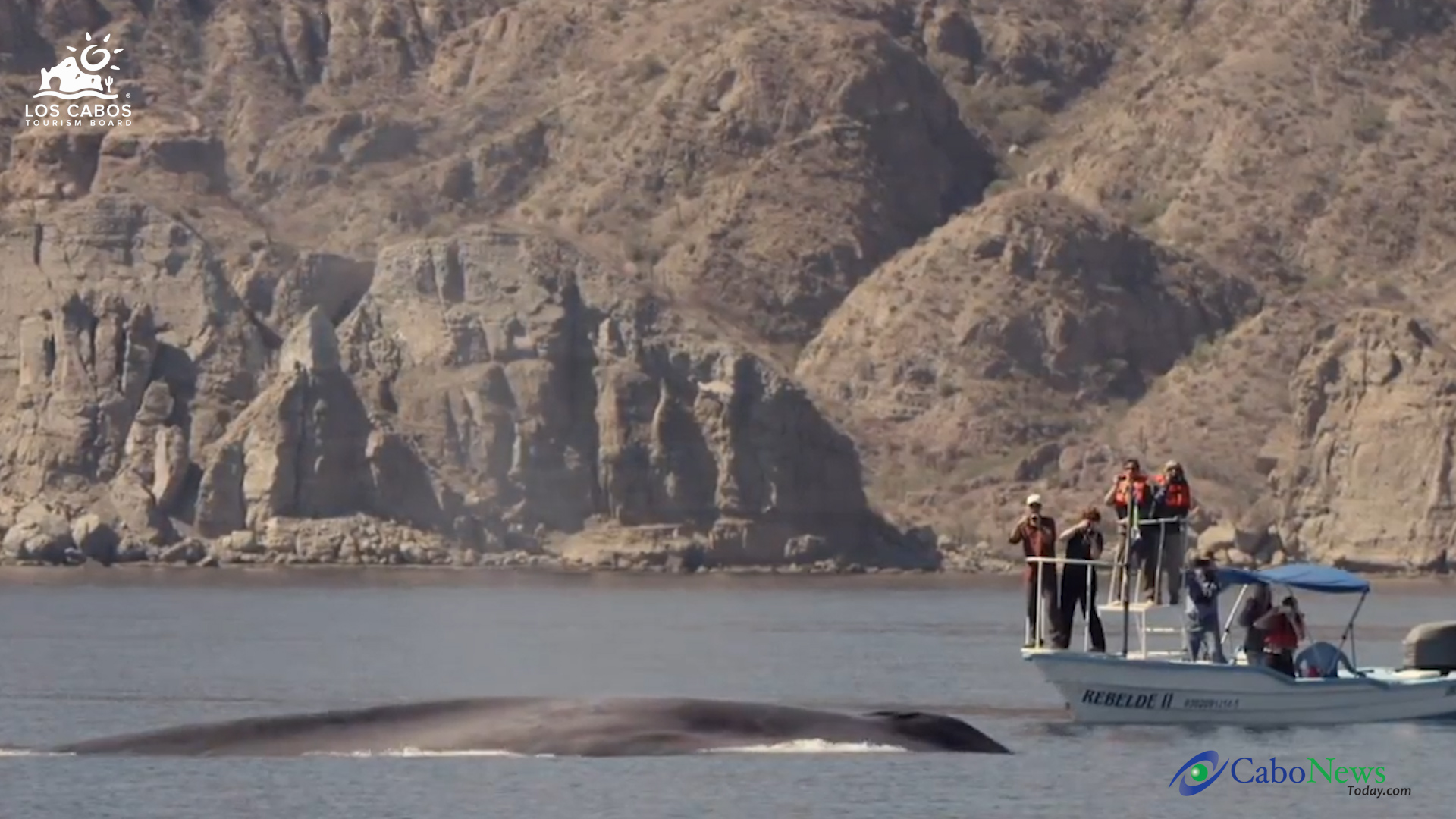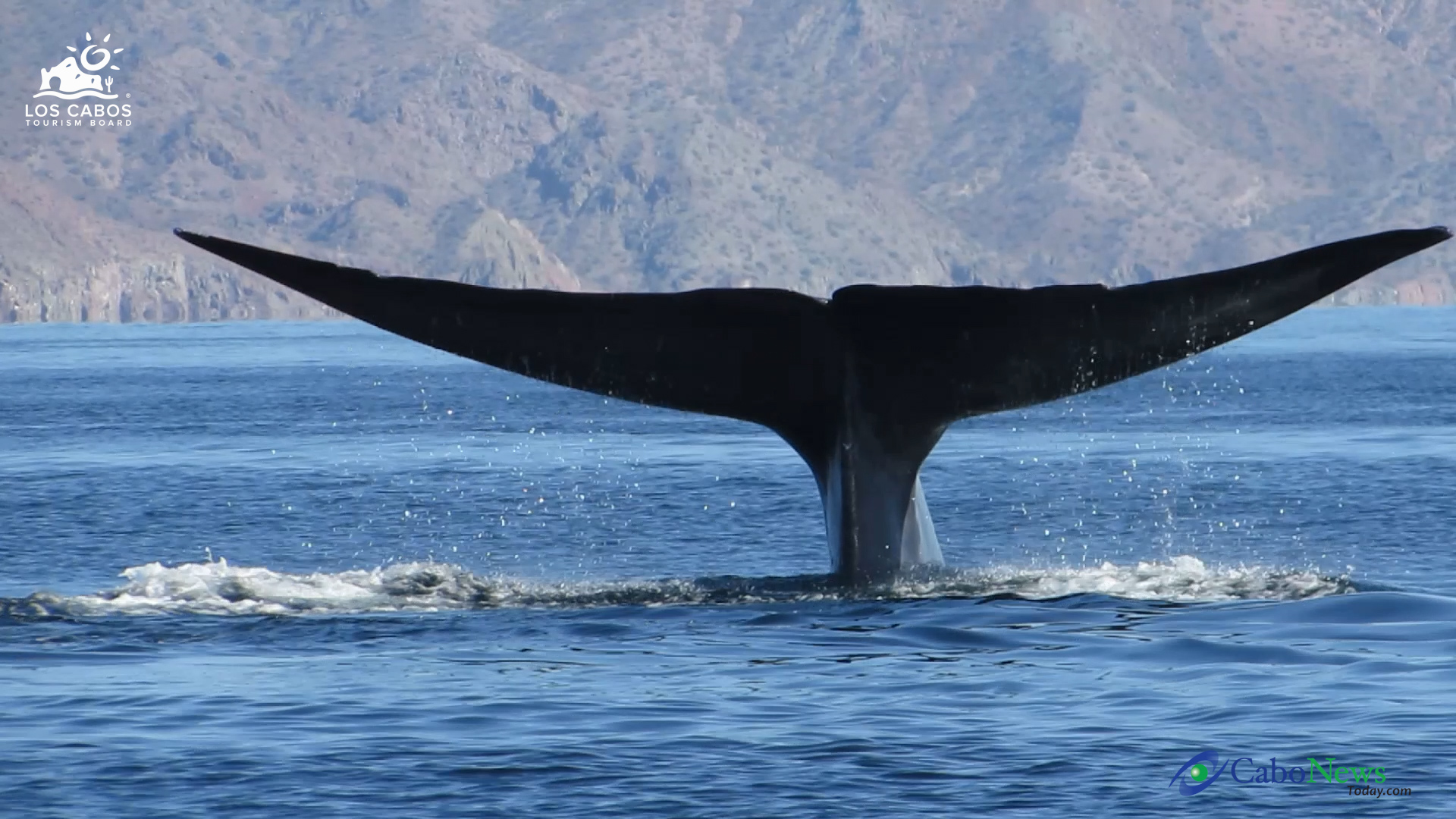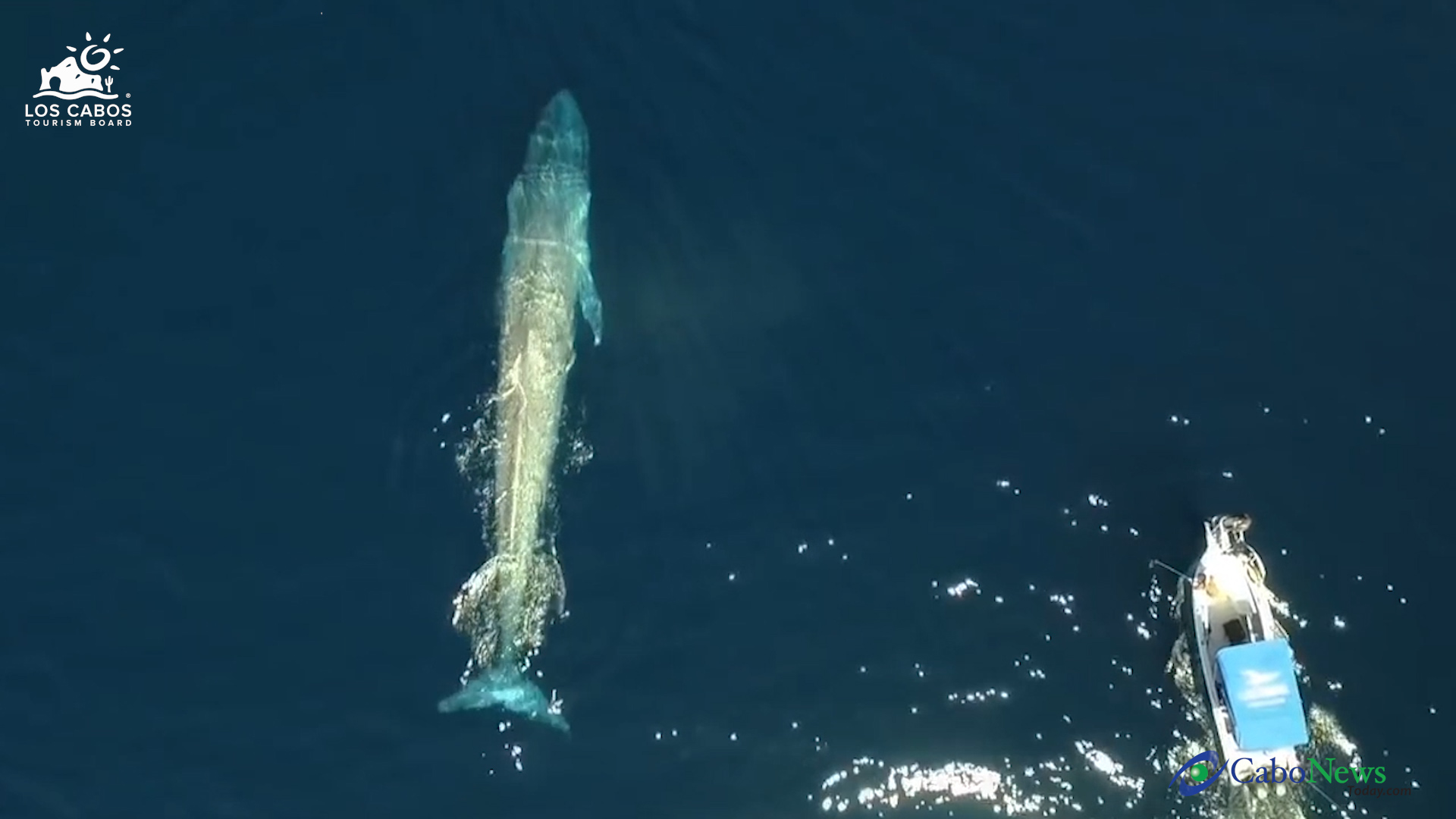The blue whale

The experience of having a close encounter with the largest animal on the planet and in history is something truly unforgettable.
Oscar Ortíz, Tourist Services Provider: “…first you hear what the blowing is, which can measure up to 12 meters, just the blowing, and you get to observe this great great animal, how it begins to melt between what is the surface of the sea and its layer of skin”.
This is the blue whale. A marine mammal with dimensions that only up close can be believed.
Rodolfo Palacios Manager of the of the Loreto Bay National Marine Park: “·…we are talking about that they can measure up to 30 meters and 180 tons. And when this one is born… they are born from 7 to 8 meters and weigh 2.5 to 3 tons…”
Oscar Ortíz, Tourist Services Provider: “…Their heart is the size of a small car… yes? the tongue weighs the same as an elephant and is the largest mammal that has existed in the history of our planet.
It is called blue because when swimming it changes its hue to the color of the sea.
Oscar Ortíz, Provider of Tourist Services: "... they have a dark, almost silvery skin and the reflection of the sun with the water and their skin makes them have a magnificent blue spot or blue mark in the mirror of water."
Their presence in the Sea of Cortez in Loreto Bay, Baja California Sur is normally from January to April, but it is more likely to be seen in March and more than 80 vessels are authorized.
Rodolfo Palacios, Manager of the National Marine Park of Loreto: “…about 80 or 90 boats authorized for this sighting… one has been framed in the management program, a superficial triangle that goes from Isla del Carmen, Isla Danzante and Isla Montserrat
Carlos Godínez, Master of Science, National Commission of Natural Protected Areas: “Blue whales arrive in the Bay of Loreto to have their young, to mate and spend two to three months in the breeding period… they feed on a hundred, one hundred and fifty liters of milk daily.”
Semarnat has implemented a permanent operation that avoids approaching them within 100 meters and only 4 boats at the same time, to protect visitors and whales.
Carlos Godínez, director of the Cabo Pulmo National Park: “…and the rule is that you only have to approach 100 meters away, with a smaller boat, with a boat and a larger boat it is 120 meters and equal to 240 meters for observation… ”
Until this month of February, 11 specimens and two calves have been registered and it is expected that some more may arrive at the beginning of March and the cost for their sighting may vary and is per boat of 6 and up to 10 people.
Óscar Ortiz, Tourist Services Provider: "...they are approximately $2,500 pesos and last about 5 hours, in terms of whale watching, since sometimes you have to go, you have to go to locate them, look for them..."
In 1926 it was estimated that there were about 125,000 individuals in the seas, however by 2018 their number was reduced to only 3,000 individuals, so the species was classified as "critically endangered" on the Red List of the International Union for Conservation of the nature.


- Created on .